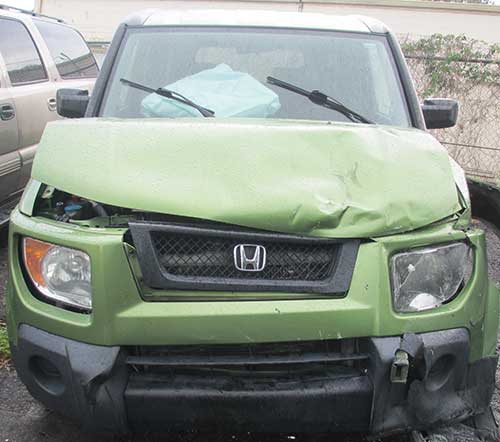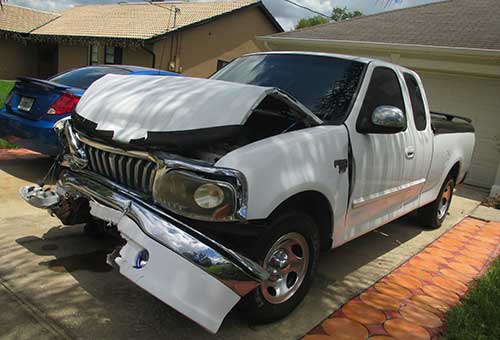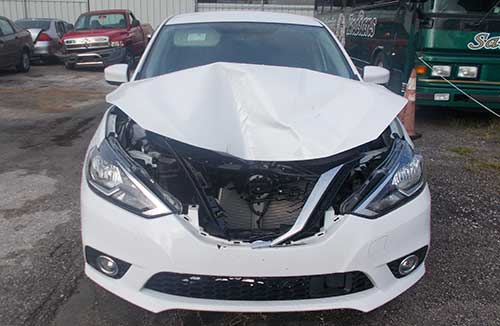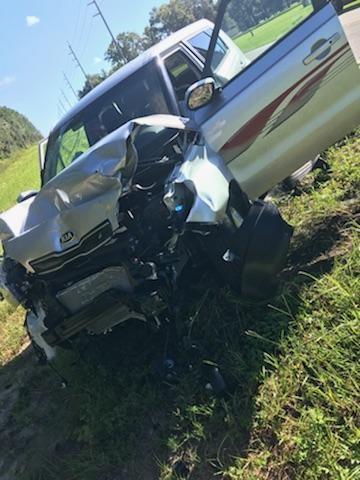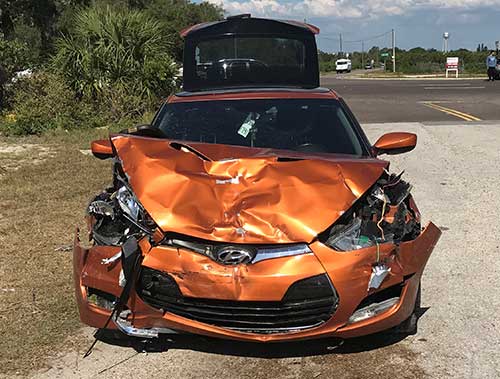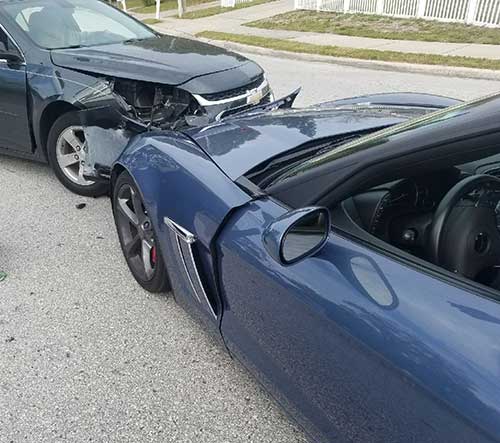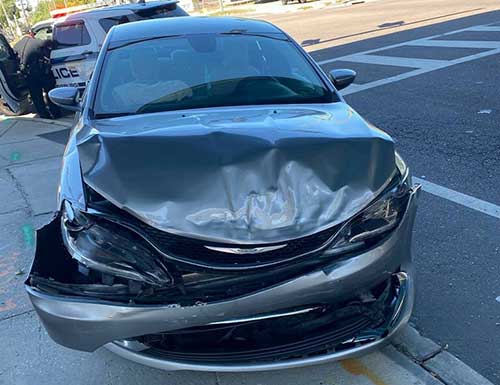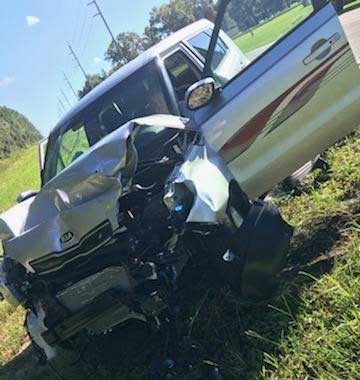Few moments are more frightening than watching another vehicle speed toward you at a head-on angle and knowing there is little you can do to avoid the impact.
The aftermath of this scenario can be just as, if not more, frightening. In 2018, head-on collisions accounted for 29.5% of multiple-vehicle crash fatalities. For those who survive head-on collisions, severe injuries can alter their lives in unimaginable ways.
If you have suffered a head-on collision injury, addressing medical needs, wage loss, and property damage is likely daunting. You may be too overwhelmed to also think about suing the at-fault driver in court.
The defendant will likely be eager to settle with you in lieu of trial, but do not settle without legal advice. The advice of an experienced car accident attorney can maximize your recovery in a head-on collision car accident settlement.
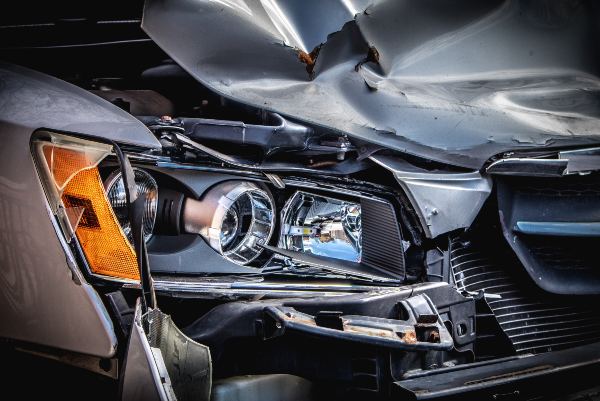
What to Expect from a Head-On Collision Settlement
Do not base the value of your accident on the average settlement for a head-on collision. That average does not exist. Every accident is unique, and settlement values should be treated accordingly.
However, there are many factors that can help you predict the settlement value of your particular accident.
How your accident occurred, the nature of your injuries, the level of property damage, and the ways in which your life has changed dictate the kind of settlement you could obtain in a negotiation.
Damages You Should Receive in a Settlement
Your settlement should cover the amount of damages you could be awarded at trial. Like a trial award, your settlement should cover your present and future economic losses, your pain and suffering, and any punitive damages applicable against the at-fault driver.
In Florida, not all car accidents involving bodily injury are appropriate to a lawsuit against a third party. To file a claim against an at-fault driver for your pain and suffering damages in Florida, your accident must involve:
- Significant and permanent loss of an important bodily function,
- Permanent injury,
- Significant permanent scarring,
- Significant permanent disfigurement, or
- Death.
An experienced attorney can determine whether you meet this threshold for recovery against an at-fault driver. If you do not meet the threshold, an attorney can help you determine your best options for relief.
Economic damages
The simplest portion of a settlement amount to calculate is your economic damages.
An at-fault driver should compensate you for accident-related medical care (past, present, and future), your wage loss from missed work and diminished earning capacity, the cost of property repair or replacement, and any other financial expenses or losses you experience.
Evidence for these damages is in your receipts, invoices, estimates, financial statements, and medical reports.
It is imperative that you seek medical attention immediately after a collision to establish your present and future medical needs. Common head-on collision injuries can be severe and can require long-term medical intervention.
An experienced personal injury attorney has the knowledge and resources to forecast the cost of your lifetime medical needs before you enter settlement negotiations.
Non-economic damages
There are no exact financial statements for your non-economic damages, but these damages are incredibly important in your recovery. Your post-accident stress, pain, and difficulties with routine activities and hobbies are worth something in a settlement.
Although money does not fix everything, you should receive non-economic damages to compensate you for your pain and suffering.
A personal injury attorney can undertake the complicated task of holding an at-fault driver accountable by converting your pain and suffering into a just dollar amount.
Punitive damages
When an at-fault driver’s conduct exceeds ordinary negligence, they can be liable for punitive damages.
To receive punitive damages under Florida law, you must prove by clear and convincing evidence that the at-fault driver’s actions were intentional or grossly negligent.
Though there is no average settlement for a head-on collision, there are limits to the punitive damages you can collect. In most cases, your punitive damages cannot exceed the greater of:
- Three times the amount of the sum of your economic and non-economic damages; or
- $500,000.
The standards to prove your entitlement to punitive damages are high, but an experienced attorney knows how to meet them.
Your Level of Fault Can Diminish Your Recovery
Unless the at-fault driver is liable for an intentional tort, Florida law reduces your economic and non-economic damages by the percentage of fault you had in causing the accident. The other driver’s insurance company wants to reduce or eliminate a settlement offer by arguing the accident is your fault.
A car crash lawyer near Tampa knows what facts and legal standards to highlight to diminish your fault and effectively pursue every penny your claim is worth.
Common Causes of Head-On Collisions
What is especially tragic about head-on collisions is that they are usually preventable. Common causes of head-on collisions include:
- Distracted driving
- Driving while impaired by drugs or alcohol
- Driving while fatigued
- Aggressive driving
- Excessive speed
- Improperly passing another vehicle on a two-lane road
- Not driving carefully in wet weather conditions
- Ignoring traffic signs and signals
These collisions happen more often on two-lane roads that don’t have dividers. They are also common on roads undergoing construction where proper signage hasn’t been used.
Most Common Types of Head-On Collision Injuries
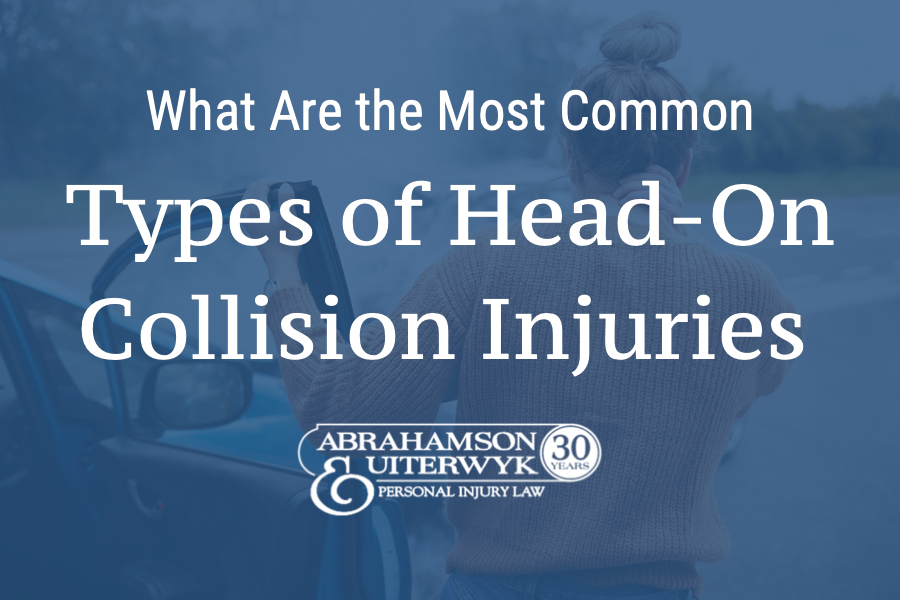
Head-on collisions are one of the most dangerous types of accidents. This is because in a head-on collision, there is nowhere for the car’s energy to go except into the other car.
Compared to a sideswipe or a fender-bender, head-on collision injuries are usually much more serious. Passengers can suffer fatal or life-threatening injuries, even with airbags and seatbelts.
Every day, tens of thousands of people drive on Florida’s roadways. With so many drivers, traffic accidents are inevitable. In 2019, there were more than 400,000 traffic crashes in the State of Florida.
After one of these accidents, the cost of medical care can skyrocket. Hiring a personal injury attorney can help you obtain damages to pay for these costs and more. If you were injured in a head-on collision, Abrahamson & Uiterwyk is here to help.
Common Head-on Collision Injuries
Head-on collision injuries can be far more severe than other types of car accidents. When two cars are speeding toward one another, a collision between them will involve much more force than other types of crashes. As a result, drivers and passengers may suffer a greater number of injuries. In a head-on collision, common injuries occur to both the body and the head.
Broken Bones, Bruises, and Lacerations
In a head-on collision, common injuries that occur include broken bones and lacerations. During the crash, it isn’t uncommon for victims to suffer broken bones. For the driver and front passenger especially, severe injury to the legs is possible as a result of a head-on collision.
Severe bruising may occur as well. All these injuries happen as a result of the extreme force exerted on your body during the crash. For example, a person properly wearing a seat belt may suffer from internal bruising and even organ damage when the seat belt tightens during the crash.
Internal Organ Damage
The blunt force during a head-on collision may be enough to cause bruising or other damage to your internal organs. Broken bones can cause organ damage as well. When drivers or passengers are thrown around in a head-on collision, they frequently suffer chest injuries, including broken ribs, which can puncture lungs or other nearby organs.
Double Impact Injuries
Finally, victims of a head-on collision may experience a “double impact.” This occurs when they suffer trauma first during the crash and again when they strike the ground after being thrown from the car. Fortunately, the risk of a double impact and the resulting secondary injuries is greatly reduced by wearing a seat belt.
Concussions
Concussions are one of the most common head-on collision injuries. In a head-on collision, the sudden impact may cause you to hit your head on the steering wheel, the dashboard, or even the windshield. Even if you think you only suffered whiplash, the violent back-and-forth head motion can be enough to cause a concussion.
A concussion can be mild or severe depending on the force of the impact. Mild “Grade 1” concussions are usually short-term and do not result in loss of consciousness. Severe “Grade 3” concussions, on the other hand, may result in long-term brain damage.
Although a person may experience headaches and other symptoms as the result of a concussion, they may go unnoticed. Confusion and memory loss especially may not be apparent to the person with the concussion. Other common symptoms include:
- Blurry vision,
- Dizziness,
- Trouble concentrating,
- Nausea, and
- Trouble sleeping.
Symptoms may not appear until days after the concussion occurs. Thus, it is very important to seek medical care right away so that you can properly treat your head injuries.
Other Head Injuries
Traumatic brain injuries (TBIs) are one of the most common injuries in a car accident. According to the CDC, car accidents are responsible for 18.7% of all brain-injury related deaths. Head injuries are particularly serious because they may not always be immediately apparent.
Head injuries may also have more permanent effects. A person who survives a head-on collision with only minor physical injuries may still have a serious head injury. For example, a coup-contrecoup brain injury involves bleeding on both sides of the brain caused by external trauma and the brain’s own movement within the skull.
What to Do After a Head-On Collision
The first thing you should do after a head-on collision is seek medical treatment. When possible, you or someone you know should start gathering information. Document the scene and collect records of your medical treatment. Then, hire a Tampa car accident attorney. The information you collect will help them build your case.
Photos of Head-On Collisions Involving Our Injury Clients
Recent Examples of Florida Head-On Collision Settlements Achieved by Abrahamson & Uiterwyk
$1,000,000/ Motorcycle Head-on Collision Accident/ Pinellas County, Florida
Some of the most significant injury cases that we handle are the result of head-on collisions involving motorcycles. This case is one such example. Our client was riding a motorcycle on the way to work approaching an intersection. The intersection was controlled by a traffic light. Our client was proceeding through the intersection on a green light. The defendant driver made an illegal left hand turn on a red light, violating our client’s right, resulting in a head on collision. Our client was ejected from the motorcycle suffering multiple significant injuries. The defendant was cited for causing the accident.

Our client was transported via ambulance to the hospital and was initially treated for broken bones to the arms, wrist, and fingers. Our client was placed in an arm sling and asked not to move the arms much until the fractures healed.
Shortly thereafter, the client began to treat with an orthopedic surgeon and was prescribed physical therapy. A few weeks after the accident the client noticed the development of significant pain to both shoulders. MRIs of both of shoulders were taken a few months after the accident which revealed rotator cuff injuries to both shoulders. The orthopedic surgeon opined the injuries to both shoulders were directly caused by the motor vehicle accident. The client had arthroscopic surgeries to both shoulders to alleviate the shoulder pain.
The defendant’s insurance company initial offer was only 115,000. That low-ball offer was rejected. The insurance company took the position that the shoulder injuries were not caused by the accident because our client did not complain of shoulder pain until weeks after the accident and claimed that our client was at fault for causing the accident.
A suit was filed and at the same time our office represented our client in a traffic court case. The traffic court case against the defendant was conducted via zoom. The defendant driver hired an attorney to represent him in the traffic court case. The defendant driver’s attorney denied his client was at fault and initially denied his client was driving the truck involved in the accident. Our office was able to meet with the eyewitness who clearly identified the defendant driver after the accident and established the defendant driver was at fault for causing the accident. After numerous continuances of the traffic court hearing the judge eventually found the defendant driver guilty of violating our client’s right of way.
During the civil suit the defendant’s driver’s deposition was taken. He admitted he was at fault after a lengthy deposition. The deposition of the eyewitness was also taken to establish fault.
A mediation was eventually set to resolve the case. The case settled at mediation for 1 million dollars.
$1,600,000/ Head-on Collision Accident/ Pinellas County, Florida
Here is an example of a recent case in which we were able to secure a settlement that was substantially higher than the insurance company’s initial offer:
Our client was a back seat passenger in a vehicle when the driver made an illegal left-hand turn violating the right of way of an approaching vehicle traveling in the opposite direction. This resulted in a head on collision.
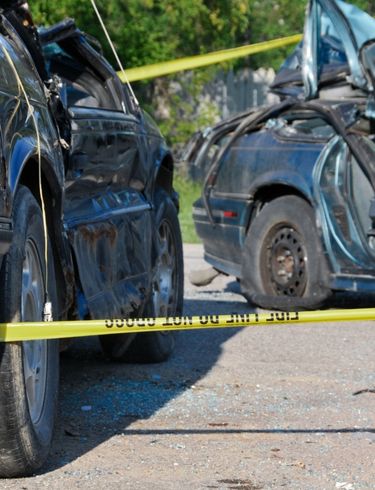
Our client was rushed to the emergency room via helicopter and treated for a broken pelvis, broken leg, neck fracture, neck pain and a closed head injury with a brain bleed. The client had surgeries to repair the broken pelvis and leg injuries and conservative treatment and rehabilitation to recover from the injury to the brain.
A demand was presented to the defendant’s insurance company. The initial offer was only 300,000. That offer was rejected.
Suit was filed immediately after receiving such a low offer. Depositions of the defendant driver, witnesses, and our client’s treating doctors were taken. Our client submitted to examinations by physicians hired by the defendant’s insurance company. One of these physicians confirmed our client had a closed head injury that was permanent.
The defendant’s insurance company offered 500,000 shortly after the suit was filed. That offer was rejected. The defendant’s insurance company offered 750,000 to settle the case at a mediation conference. The offer was rejected.
After the case progressed further through the lengthy litigation process the case eventually settled for 1.6 million dollars closer to the trial date.
Should I Hire an Attorney?
Even if you feel that your injuries are relatively minor, it is a good idea to hire an attorney. We work on a contingency basis, which means you won’t pay a cent, no fees or costs unless we win or settle your case.
Hiring an attorney is the only way to make sure you obtain proper compensation for your injuries. Insurance companies are difficult to deal with and will not make a fair offer. Things are only more complicated if the other person doesn’t have insurance. In either case, our attorneys will help you build a strong case to maximize your recovery.
Contact an Attorney to Fight for the Full Value of Your Claim
An experienced personal injury attorney knows how to look at the facts of your case to maximize your recovery.
Our attorneys at Abrahamson & Uiterwyk have over 30 years of experience, and we have collected over $800 million on behalf of our clients. We are dedicated personal injury attorneys in Florida who fiercely fight for your rights with integrity. We also treat you with the compassion you deserve.
Do not struggle alone to recover just value in a car accident case. Call us at 813-223-5295 or contact us online, and let us help you win what you are due.


